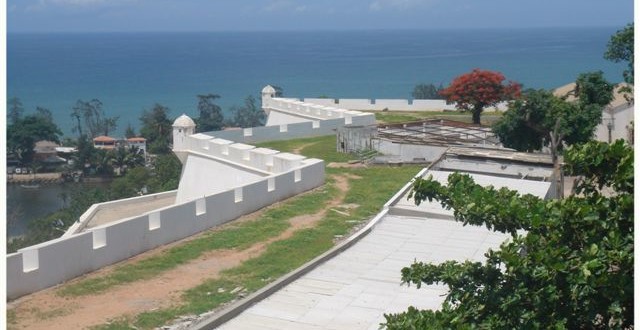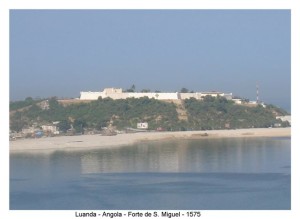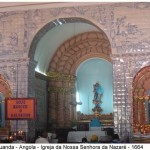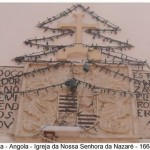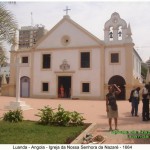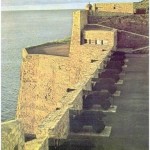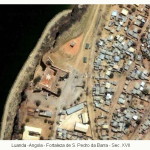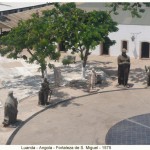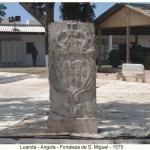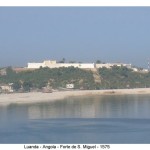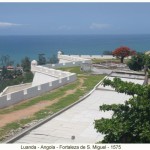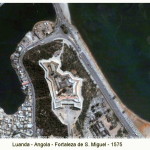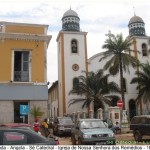This post is also available in:
![]() Português
Português
Written by Marco Ramerini. Photos by Virgílio Pena da Costa. English text revision by Dietrich Köster.
The city of Luanda, the capital of Angola, was founded by the Portuguese explorer Paulo Dias de Novais on 25 January 1576. The city was named by the Portuguese as “São Paulo da Assumpção de Loanda”. The Portuguese, in the following years, built three fortress: the Fortaleza São Pedro da Barra (1618), the Fortaleza de São Miguel (1575) and Forte de São Francisco do Penedo (1765-6). The best preserved of the Portuguese fortresses of Luanda is that of São Miguel.
FORTRESS OF SÃO MIGUEL
The Fortress of São Miguel in Luanda is located near the bridge, which connects the island of Luanda (Restinga) to the mainland, high above on the hill of São Paulo. The fortress has a complex plant of polygonal shape with numerous bastions, being in excellent state of preservation.
The initial fort was built by the first Portuguese governor of Angola Paulo Dias de Novais in 1575. It was the first fort to be built in Luanda, in the sixteenth century, the fort was first built of rammed earth and adobe (a natural building material made from sand, clay, water, and some kind of fibrous or organic material), substutuídos later by clay, rammed earth and adobe.
The fortress was restored and reinforced in 1634, when the Portuguese, fearful of an attack by the Dutch, rebuilt and renovated the city’s defenses. Nevertheless the city of Luanda and the fortress of São Miguel were occupied by the Dutch in 1641. During their period of occupation, which lasted until 1648, the fortress was known as Fort Aardenburg.
The current appearance of the fort dates from the late 17th century, when under the government of Francisco de Távora (1669-1676) the fort was rebuilt in brick and completed by a new bulwark and two curtain walls. Today the fortress houses the Museum of the Armed Forces (Museu das Forças Armadas).
- Church of Nossa Senhora da Nazaré, Luanda, Angola. Author and Copyright Virgilio Pena da Costa..
- Church of Nossa Senhora da Nazaré, Luanda, Angola. Author and Copyright Virgilio Pena da Costa.
- Church of Nossa Senhora da Nazaré, Luanda, Angola. Author and Copyright Virgilio Pena da Costa
- Fortaleza São Pedro da Barra, Luanda, Angola. Author and Copyright Virgilio Pena da Costa…
- Fortaleza São Pedro da Barra, Luanda, Angola
- Fortress of São Miguel, Luanda, Angola. Author and Copyright Virgilio Pena da Costa…
- Fortress of São Miguel, Luanda, Angola. Author and Copyright Virgilio Pena da Costa..
- Fortress of São Miguel, Luanda, Angola. Author and Copyright Virgilio Pena da Costa.
- Fortress of São Miguel, Luanda, Angola. Author and Copyright Virgilio Pena da Costa
- Fortress of São Miguel, Luanda, Angola
- Cathedral (Sé Catedral), Igreja de Nossa Senhora dos Remédios, Luanda, Angola. Author and Copyright Virgilio Pena da Costa
This post is also available in:
![]() Português
Português
 Colonial Voyage The website dedicated to the Colonial History
Colonial Voyage The website dedicated to the Colonial History
